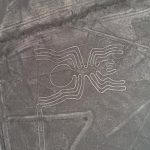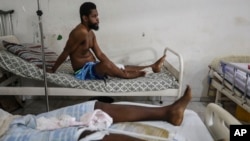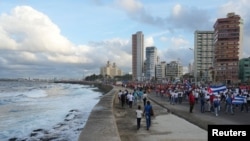Under the darkness of night, dozens of gang members crept up to the small town of Pont-Sondé in central Haiti, armed with knives and assault rifles as families slept.
The gang had come from nearby Savien in vehicles that they abandoned midway, using canoes for the rest of the journey so as not to make noise.
The shots and screams woke up the people. Those who were not shot were stabbed.. The fire engulfed the houses.
“They tried to kill us all,” said one survivor, Jina Joseph.
The Grand Grif gang killed babies and young mothers, elderly people and entire families, angry that a self-defense group had tried to limit gang activity in Pont-Sondé and prevented them from making money with a makeshift checkpoint erected in a local road.
The gang members fled on foot through nearby rice fields after the attack last Thursday, leaving more than 70 bodies scattered around the town.
It is the worst massacre in Haiti’s once peaceful central region in recent years. Thousands of people now face an uncertain future, without jobs, housing or family.
Jameson Fermilus, who hid in a hallway next to his home as gunshots and smoke filled the air, later joined more than 6,000 survivors who walked for hours seeking shelter.
“We don’t know what we’re going to do,” said another survivor, Sonise Morino, 60. “We have nowhere to go.”
Hungry, thirsty and homeless
Thousands of survivors walked west toward the coastal town of Saint-Marc. Days after the massacre, a crowd of men, women and children gathered around a good Samaritan who stood on his cart, handing out food and drink.
The now homeless turned to a church, a school or a tree-covered public square. The lucky ones who received food sat on the sidewalk to eat. At night, they lay down on cement floors to try to sleep.
“These deaths are unimaginable,” said Mayor Myriam Fièvre as she met with survivors.
A majority of the 6,270 people left homeless have found accommodation with relatives who live nearby, according to the International Organization for Migration.
But more than 750 others have nowhere to go, adding to the more than 700,000 people already homeless due to gang violence across Haiti.
Inside a school converted into a temporary shelter, a woman leaned against a blackboard, gently stroking her baby on the back and staring into the distance.
“What they have done is send a message”
Massacres of that magnitude were previously unthinkable in central Haiti, despite a recent rise in gang violence. Until now such killings were reported only in the capital, Port-au-Prince, of which 80% is under gang control.
But things changed when former legislator Prophane Victor began arming young men almost a decade ago in order to secure the election and control the area. This led to the creation of the Gran Grif gang, which controls Savien, Pont-Sondé and other places in the Artibonite region, according to the UN.
Victor and Gran Grif ringleader Luckson Elan were sanctioned by the United States last month. Elan was also sanctioned by the UN Security Council, which noted that Gran Grif is the “largest and most powerful” gang in Artibonite, carrying out nine mass kidnappings between October 2023 and January 2024, including the kidnapping of 157 people. .
During that period, Elan killed a woman because she refused to have sex with him, the UN said.
The gang, whose name translates as “Big Claw,” is also one of the gangs that most recruits minors in Haiti, according to the UN.
Gran Grif is one of at least 20 criminal groups operating in Artibonite, where much of Haiti’s rice and other crops are produced. More than 22,000 people have been forced to flee in recent years as armed men attack farmers and steal crops and animals, according to the UN, which has described the authorities’ response as “inadequate and inconsistent.”
In an interview Monday, Romain Le Cour, senior Haiti expert for the Global Initiative Against Transnational Organized Crime, said he worries about the effects last week’s massacre could have on other gangs, despite a new mission with support of the UN operating in Haiti.
“What they have done is send a message: that they are more powerful than others and that they are willing to use brute force against people in order to ensure that their territorial power and their economic control remain intact,” Le Cour said.
He added that the Haitian National Police and the mission led by Kenyan police are having difficulties operating only in Port-au-Prince.
“It will be even more difficult to open multiple battle fronts,” he estimated. “It is a huge challenge for the government right now.”
Since the massacre, the Haitian government has deployed armored vehicles, elite police and medical teams to Pont-Sondé and Saint-Marc. Prime Minister Garry Conille visited the area’s only hospital, now overwhelmed by people injured in the massacre.
On Monday morning, police were still trying to enter parts of Pont-Sondé as members of the self-defense group refused to give statements. The normally crowded main street was almost empty. Shots could be heard in the distance.
Connect with the Voice of America! Subscribe to our channels YouTube, WhatsApp and to the newsletter. Turn on notifications and follow us on Facebook, x and instagram.
















Add Comment